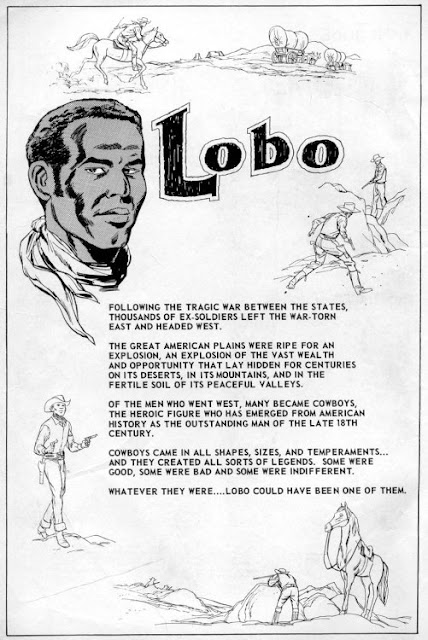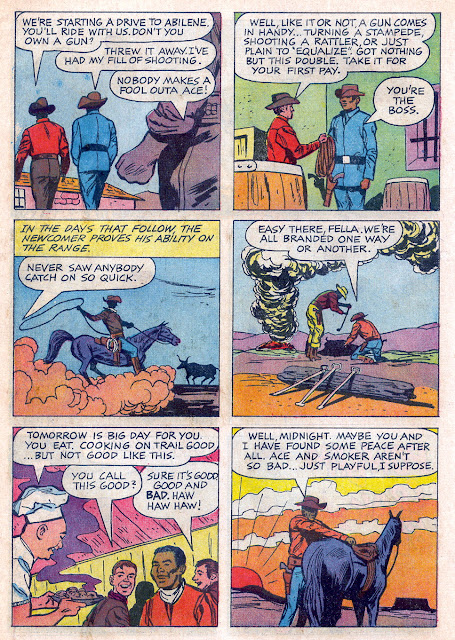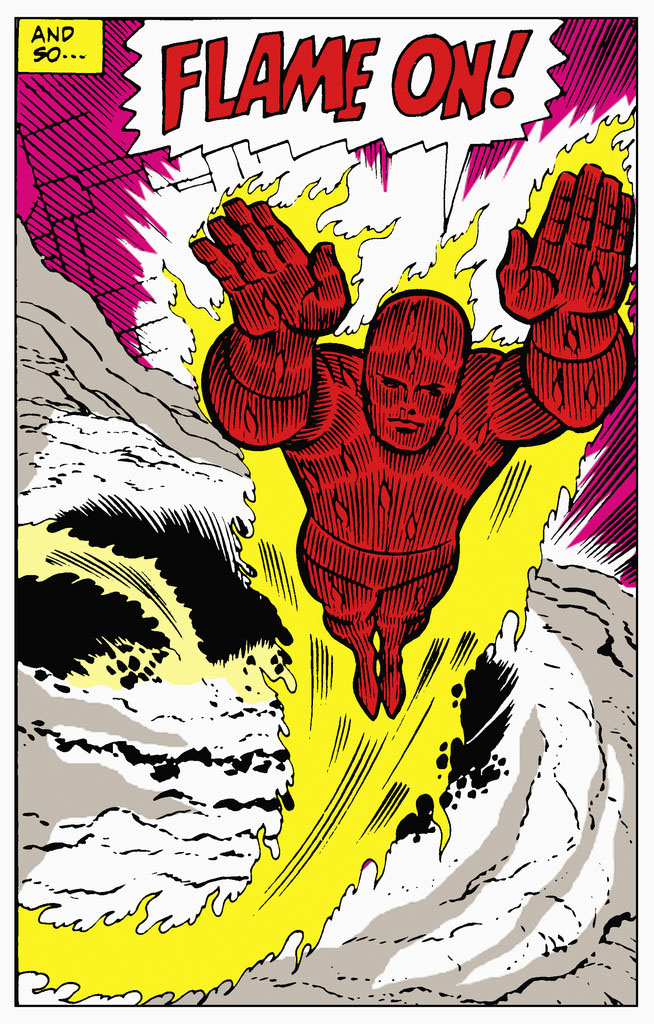Created the same year (1966) as Marvel's
Black Panther
(who guest-starred in
Fantastic Four,
Tales of Suspense, and
The Avengers, but didn't get his
own series until 1973, or his
own comic
until 1977),
Lobo was the FIRST Black character with HIS OWN BOOK!
(Other Black characters had their own
series in anthology books, but
Lobo was the first to have his name AS the comic's title!)
Lobo combined several popular concepts...
Man on the Run for a Crime He Did NOT Commit
Exemplified by then-hit tv series The Fugitive, Lobo was framed, but couldn't prove his innocence.
Lone Western Hero
A loner wandering the Old West, righting wrongs was an especially popular genre in tv Westerns.
Variations on the theme included gamblers (
Maverick
) and martial-arts experts (
Kung Fu
)
Note: the tv series
Branded
combined both the
Loner and
Man Framed themes!
Prominent Black character
Black characters (except for sterotypes like
Amos 'n Andy
) were few and far between on tv until the mid-1960s, and even then only as supporting characters (usually servants).
1960s urban dramas like
Naked City
and
East Side, West Side, which dealt with current social themes had Black guest stars including James Earl Jones and Diana Sands, but no Black regulars.
Star Trek
(1966) had both a Black regular character (
Lt. Nyota Uhura) and Black actors in prominent roles as scientists and high-placed officers (admirals, etc,).
But, at that point, there were
no tv series with a Black lead or Black title character!
(
Diahann Carroll's groundbreaking series
Julia didn't debut until 1968!)
So,
Lobo was, to say the least, a daring experiment, albeit one with as many popular themes as possible to maximize sales potential!
Unfortunately, it didn't work.
Lobo the comic only ran two issues, but now you can have the collectibles like t-shirts, magnets, mousepads, etc., they never made during his title's too-brief run!
Dedicated
Lobo pages...
Lobo the First
Lobo the Second
Plus, as a
Black History Month special, we're going to present the complete, unedited, two-issue run!
Join us over the next few days as we relive
The Saga of Lobo...





















